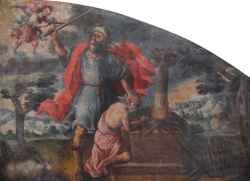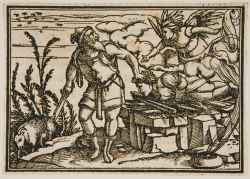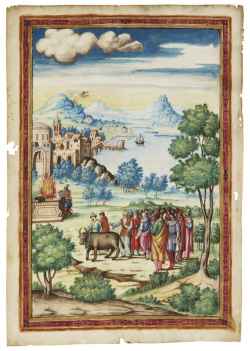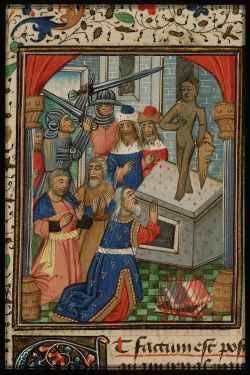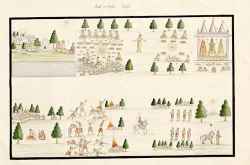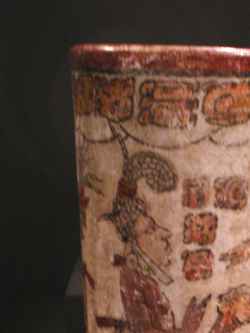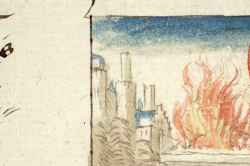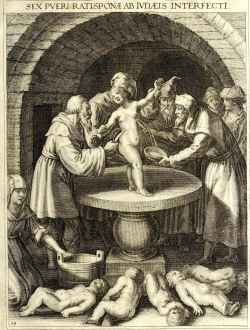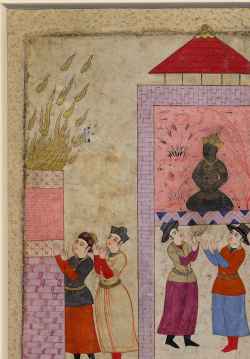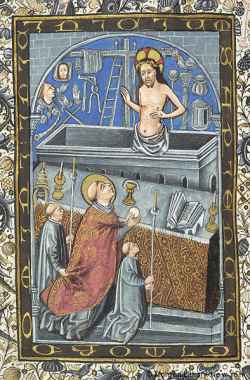Editor: Chiara Petrolini
The Sacrifice of Isaac (s.d.)
from: Project on engraved sources of Spanish colonial art
Iglesia de San Sebastián, Cusco, Peru
Ancient ritual sacrifice depicting a boar, a bull and a ram (suovetaurilia) being brought towards the altar at right, after a Roman relief from the Julio-Claudian era (1544-1577)
from: Series: Speculum Romanae Magnificentiae, published in Rome
Antiochus IV Epiphanes has the altar of sacrifice desecrated (1465)
from: Bible moralisée (Bruges)
Koninklijke Bibliotheek, The Hague, KB, 76 E 7
Buddha explaining the correct sacrifices according to the Veda. The story of Kalki, the destruction of the tyrants, and the Indian representation of the Buddha and the avatara of Kalki. [1774]
from: Rites and Beliefs of the Hindus [Indian Company Paintings]
London, V&A Museum
Ceremonial knife (tumi) with figural finial (1470–1532)
from: South America, Peru, Central highlands
Cylinder vase with prisoner and sacrificial scene (Maya)
San Francisco, Fine Arts Museums
Dagger. The grip depicts the Sacrifice of Isaac. (c. 1600)
from: Italy
The Cleveland Museum of Art
Deities and Demons Performing the Yajna Sacrifice from the Devi Mahatmya (18th)
from: India, Rajput
Princeton University Art Museum
Dieu ordonnant à Satan d'éprouver Job - Job sacrifiant (1470-1480)
from: Jean Mansel (1400?-1473?) : La fleur des hystoires
Paris, Bibliothèque Mazarine, Ms 1562, fol. 118
Elijah confounds the prophets of Baal by putting their God to a challenge. Only Elijah's sacrifice to God is consumed by fire (III Kings 18: 25-40) (1539)
from: Britain
Boston, The Harvard Art Museums
Fictitious illustration of a medieval ritual murder accusation (1627)
from: Matthäus Rader, Bavaria Sancta Band III, 1627, p. 173
Gregory the Great celebrating Mass (1465-1480)
from: Book of Hours Spain, perhaps Burgos or Segovia
New York, The Morgan Library Library & Museum, MS M.854 fol. 225v
Handprints of women who committed sati
Wall of the Junagarh Fort (Bikaner, Rajasthan, India)
Hanuman and the monkeys assault the demons, forcing Indrajita to break off the sacrifice that would make him invincible (1597-1605)
from: The Ramayana (Tales of Rama; The Freer Ramayana), Volume 2
National Museum of Asian Art, Smithsonian Institution, Washington D.C.

